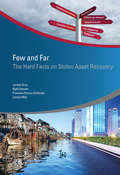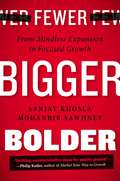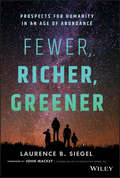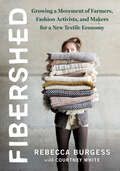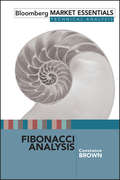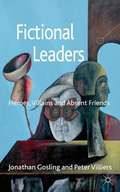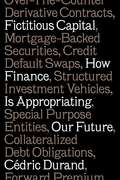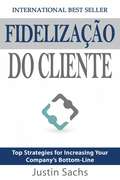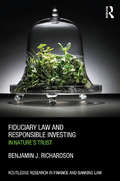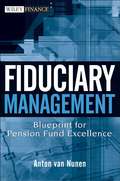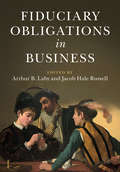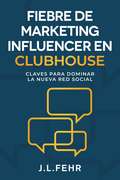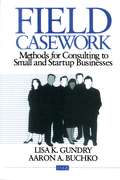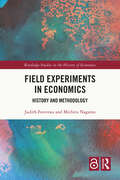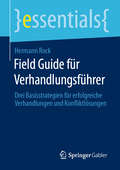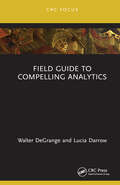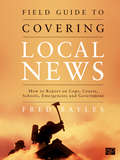- Table View
- List View
Few and Far
by Larissa Gray Pranvera Recica-Kirkbride Kjetil Hansen Linnea MillsCorruption has a devastating impact on developing and transition countries, with estimates of $20 billion to $40 billion per year stolen by public officials, a figure equivalent to 20 to 40 percent of flows of official development assistance. The return of the proceeds of corruption--asset recovery--can have a significant development impact. Returns can be used directly for development purposes, such as improvements in the health and education sectors and reintegration of displaced persons, with additional benefits of improved international cooperation and enhanced capacity of law enforcement and financial management officials. Development agencies and those committed to development effectiveness have a role in the asset recovery process. They have made international commitments to fight corruption and recover the proceeds of corruption in the Third High Level Forum on Aid Effectiveness: Accra Agenda for Actions, held in Accra in 2008, and the Fourth High Level Forum on Aid Effectiveness: Partnership for Effective Development, held in Busan in 2011. Despite these efforts, there has been difficulty in translating these commitments into concrete action. This StAR-OECD publication reports on how OECD countries are performing on asset recovery. Drawing on data collected between 2006 and 2012, the report provides recommendations and good practices and suggests specific actions for development agencies. Few and Far is primarily intended to support the anti-corruption and asset recovery efforts of developed and developing jurisdictions, with a particular focus on actions for development agencies. In addition, civil society organizations engaged in governance and development issues may wish to use these findings and recommendations in their reports and advocacy efforts.
Fewer, Bigger, Bolder
by Sanjay Khosla Mohanbir Sawhney"When it comes to growing revenues, not all dollars are equal." In company after company that Sanjay Khosla and Mohanbir Sawhney worked for or researched, they saw businesses taking on more products, more markets, more people, more acquisitions--adding more of everything except what really mattered: sustainable and profitable growth. And in many of these companies -- large or small, from America to Europe to Asia -- every quarter became a mad dash to find yet another short-term revenue boost. There had to be a better way -- an alternative to the scramble for mindless expansion. The answer lies in Fewer, Bigger, Bolder, a market-proven, step-by-step program to achieve sustained growth with rising profits and lower costs. The authors prove that given the right incentives, managers using this program can produce astonishing results in amazingly short time frames. That's exactly what Khosla accomplished as President of Kraft's developing markets, which enjoyed eye-popping revenue growth from $5 billion to $16 billion in just six years, while profitability increased 50%. Sawhney, a professor at Northwestern's Kellogg School of Management, discovered a similar formula for stellar results when advising a portfolio of businesses, from Fortune 500 giants to technology start-ups. No matter how big the company or how difficult the economic environment, managers who use this seven-step program ("Focus7") will learn how to make fewer but bigger bets and to create a virtuous cycle of growth. Fewer, Bigger, Bolder crosses the usual boundaries of strategy, execution, people and organization. Its framework shows how you can drive growth by targeting resources against priorities, simplifying your operations, and unleashing the potential of your people. By challenging the conventional wisdom about growth, Fewer, Bigger, Bolder is likely to ignite a vigorous debate throughout the business community. It's a game-changing book that couldn't be more timely. Or more needed.
Fewer, Richer, Greener: Prospects for Humanity in an Age of Abundance
by Laurence B. SiegelHow the world has become much better and why optimism is abundantly justified Why do so many people fear the future? Is their concern justified, or can we look forward to greater wealth and continued improvement in the way we live? Our world seems to be experiencing stagnant economic growth, climatic deterioration, dwindling natural resources, and an unsustainable level of population growth. The world is doomed, they argue, and there are just too many problems to overcome. But is this really the case? In Fewer, Richer, Greener, author Laurence B. Siegel reveals that the world has improved—and will continue to improve—in almost every dimension imaginable. This practical yet lighthearted book makes a convincing case for having gratitude for today’s world and optimism about the bountiful world of tomorrow. Life has actually improved tremendously. We live in the safest, most prosperous time in all human history. Whatever the metric—food, health, longevity, education, conflict—it is demonstrably true that right now is the best time to be alive. The recent, dramatic slowing in global population growth continues to spread prosperity from the developed to the developing world. Technology is helping billions of people rise above levels of mere subsistence. This technology of prosperity is cumulative and rapidly improving: we use it to solve problems in ways that would have be unimaginable only a few decades ago. An optimistic antidote for pessimism and fear, this book: Helps to restore and reinforce our faith in the future Documents and explains how global changes impact our present and influence our future Discusses the costs and unforeseen consequences of some of the changes occurring in the modern world Offers engaging narrative, accurate data and research, and an in-depth look at the best books on the topic by leading thinkers Traces the history of economic progress and explores its consequences for human life around the world Fewer, Richer, Greener: Prospects for Humanity in an Age of Abundance is a must-read for anyone who wishes to regain hope for the present and wants to build a better future.
Fiancé and Marriage Visas: A Couple's Guide to U.S. Immigration (5th edition)
by Ilona M. BrayFiancé and Marriage Visas makes obtaining a visa and green card as painless as possible for spouses and fiancés. Easy to understand, this one-of-a-kind book demystifies the immigration process, guides readers through the bureaucracy, and provides intensive instructions for each step.
Fiat and Fairness: Why China Can Build Cities Overnight and India Cannot
by Tarun KhannaThis chapter considers differing attitudes to private property in China and India, and the effects of these attitudes on economic growth.
Fiat-Chrysler Alliance: Launching the Cinquecento in North America
by Gary P. Pisano Alessandro Di Fiore Phillip AndrewsFiat ended its 27-year absence in the North American automobile market when the first Cinquecento (500)-a very small, iconic Italian car that had strong sales in Europe-was delivered on March 10, 2011. The Italian automaker re-entered the market through an alliance with Chrysler, the American automaker Fiat acquired in April 2009. For Laura Soave, Chrysler Group's head of Fiat Brand North America, the first delivery marked a watershed in a journey that began 12 months before when she first took responsibility for re-launching the Fiat brand in North America. As the first product of the Fiat-Chrysler alliance, the outcome of the Cinquecento launch would indicate how the integration of operations, and in particular the sharing of technology, platforms, components, manufacturing plants, and distribution networks would drive the long-term health of both Fiat and Chrysler. This case looks at the various strategic and operational challenges Soave faced throughout the process.
Fiat-Chrysler Alliance: Launching the Cinquecento in North America
by Gary P. Pisano Alessandro Di Fiore Phillip AndrewsFiat ended its 27-year absence in the North American automobile market when the first Cinquecento (500)-a very small, iconic Italian car that had strong sales in Europe-was delivered on March 10, 2011. The Italian automaker re-entered the market through an alliance with Chrysler, the American automaker Fiat acquired in April 2009. For Laura Soave, Chrysler Group's head of Fiat Brand North America, the first delivery marked a watershed in a journey that began 12 months before when she first took responsibility for re-launching the Fiat brand in North America. As the first product of the Fiat-Chrysler alliance, the outcome of the Cinquecento launch would indicate how the integration of operations, and in particular the sharing of technology, platforms, components, manufacturing plants, and distribution networks would drive the long-term health of both Fiat and Chrysler. This case looks at the various strategic and operational challenges Soave faced throughout the process.
Fibershed: Growing a Movement of Farmers, Fashion Activists, and Makers for a New Textile Economy
by Rebecca Burgess&“Fibershed is a story of vision, persistence, and kindness. With patience and grace, Rebecca has restored a sense of gratitude for the overlooked grasses and herbaceous plants that were once our second skin. From the living world around her, she has stitched together the broken strands of textile arts, creating an economy of place where makers are artists and clothing is revered.&”—Paul Hawken, author of CarbonA new &“farm-to-closet&” vision for the clothes we wear–by a leader in the movement for local textile economiesThere is a major disconnect between what we wear and our knowledge of its impact on land, air, water, labor, and human health. Even those who value access to safe, local, nutritious food have largely overlooked the production of fiber, dyes, and the chemistry that forms the backbone of modern textile production. While humans are 100 percent reliant on their second skin, it&’s common to think little about the biological and human cultural context from which our clothing derives.Almost a decade ago, weaver and natural dyer Rebecca Burgess developed a project focused on wearing clothing made from fiber grown, woven, and sewn within her bioregion of North Central California. As she began to network with ranchers, farmers, and artisans, she discovered that even in her home community there was ample raw material being grown to support a new regional textile economy with deep roots in climate change prevention and soil restoration. A vision for the future came into focus, combining right livelihoods and a textile system based on economic justice and soil carbon enhancing practices. Burgess saw that we could create viable supply chains of clothing that could become the new standard in a world looking to solve the climate crisis.In Fibershed readers will learn how natural plant dyes and fibers such as wool, cotton, hemp, and flax can be grown and processed as part of a scalable, restorative agricultural system. They will also learn about milling and other technical systems needed to make regional textile production possible. Fibershed is a resource for fiber farmers, ranchers, contract grazers, weavers, knitters, slow-fashion entrepreneurs, soil activists, and conscious consumers who want to join or create their own fibershed and topple outdated and toxic systems of exploitation.
Fibonacci Analysis (Bloomberg Financial #42)
by Constance BrownOnly someone who is both a successful trader and a successful writer could pull off what Constance Brown has accomplished in this book: distilling Fibonacci analysis to two hundred or so comprehensive, clearly written, eminently practical pages. Brown knows exactly what a professional trying to come up to speed on a new trading tool needs and she provides it, covering what Fibonacci analysis is, how it works, where it comes from, pitfalls and dangers, and, of course, how to use it. Basic trading strategies are touched upon in virtually every chapter. Fibonacci analysis is one of the most popular technical analysis tools, yet it is often used incorrectly. Brown quickly clears up common misconceptions and moves on to show, step by step, the correct way to apply the technique in any market. Those with Fibonacci analysis software will learn how to use it with maximum effectiveness; those without will chart the market the old-fashioned way. All will find answers to the trader's most important questions: Where is the market going? At what level should my stop be entered? Based on the size of my trading account, how much should I leverage into a trading position? Can I tell if I am in trouble before my stop is hit? How much should I buy or sell if given a second or third opportunity? Occasional references to other tools--including Elliott Wave, W.D. Gann, and candlestick charts--and an extensive bibliography make this book richer for accomplished technical analysts without confounding the less experienced. Plentiful real-life examples and dozens of carefully annotated charts insure every reader will get maximum value from every minute spent with this book. Gold Medal Winner (tie), Investing Category, Axiom Business Book Awards (2009) Winner: Book Series Cover Design, The Bookbinders Guild of New York/2009 New York Book Show Awards
Fictional Leaders
by Jonathan Gosling Peter VilliersManagement theory is vague about the experience of leading. Success, power, achievement are discussed but less focus is given to negative experiences leaders faced such as loneliness or disappointment. This book addresses difficult-to-explore aspects of leadership through well-known works of literature drawing lessons from fictional leaders.
Fictitious Capital: How Finance Is Appropriating Our Future
by David Broder Cédric DurandHow finance is a mechanism of social and political dominationThe 2007–08 credit crisis and the long recession that followed brutally exposed the economic and social costs of financialization. Understanding what lay behind these events, the rise of “fictitious capital” and its opaque logic, is crucial to grasping the social and political conditions under which we live. Yet, for most people, the operations of the financial system remain shrouded in mystery.In this lucid and compelling book, economist Cédric Durand offers a concise and critical introduction to the world of finance, unveiling the truth behind the credit crunch. Fictitious Capital moves beyond moralizing tales about greedy bankers, short-sighted experts and compromised regulators to look at the big picture. Using comparative data covering the last four decades, Durand examines the relationship between trends such as the rise in private and public debt and the proliferation of financial products; norms such as our habitual assumptions about the production of value and financial stability; and the relationship of all this to political power.Fictitious Capital offers a stark warning about the direction that the international economy is taking. Durand argues that the accelerated expansion of financial operations is a sign of the declining power of the economies of the Global North. The City, Wall Street and other centres of the power of money, he suggests, may already be caked with the frosts of winter.
Fidelização Do Cliente
by Justin Sachs Bianca Busato PortellaFidelização do Cliente fornece as melhores ferramentas, estratégias e princípios dos melhores profissionais de negócios estratégicos do mundo. Trata-se de sistemas e práticas que empreendedores e líderes de empresas reais utilizam diariamente nos seus negócios para aumentar a fidelização do cliente e o valor do tempo de vida geral de seus clientes.
Fiduciary Duties Law for Managers: An Overview
by Trevor Fetter J. S. NelsonIndustry and Background Note
Fiduciary Law and Responsible Investing: In Nature’s trust (Routledge Research in Finance and Banking Law)
by Benjamin J. RichardsonThis book is about fiduciary law’s influence on the financial economy’s environmental performance, focusing on how the law affects responsible investing and considering possible legal reforms to shift financial markets closer towards sustainability. Fiduciary law governs how trustees, fund managers or other custodians administer the investment portfolios owned by beneficiaries. Written for a diverse audience, not just legal scholars, the book examines in a multi-jurisdictional context an array of philosophical, institutional and economic issues that have shaped the movement for responsible investing and its legal framework. Fiduciary law has acquired greater influence in the financial economy in tandem with the extraordinary recent growth of institutional funds such as pension plans and insurance company portfolios. While the fiduciary prejudice against responsible investing has somewhat waned in recent years, owing mainly to reinterpretations of fiduciary and trust law, significant barriers remain. This book advances the notion of ‘nature’s trust’ to metaphorically signal how fiduciary responsibility should accommodate society’s dependence on long-term environmental well-being. Financial institutions, managing vast investment portfolios on behalf of millions of beneficiaries, should manage those investments with regard to the broader social interest in sustaining ecological health. Even for their own financial self-interest, investors over the long-term should benefit from maintaining nature’s capital. We should expect everyone to act in nature’s trust, from individual funds to market regulators. The ancient public trust doctrine could be refashioned for stimulating this change, and sovereign wealth funds should take the lead in pioneering best practices for environmentally responsible investing.
Fiduciary Management
by A. Van NunenFiduciary Management offers an in-depth explanation of every facet of this fast-growing approach to organizing the management of an institutional investment portfolio. Expert author Anton van Nunen begins by outlining the historic shift that has brought this strategy to the attention of the investment community and quickly moves on to illustrate fiduciary management in practice; giving advice in terms of asset-liability modeling and financial markets, constructing portfolios, selecting and overseeing investment managers, benchmarking and performance measurement, and reporting.
Fiduciary Obligations in Business
by Arthur B. Laby Jacob Hale RussellThe scholarship on fiduciary duties in business organizations is often pulled in two directions. While most observers would agree that business organizations are one of the key contexts for the application of the fiduciary obligation, corporate law theorists have often expressed disdain for the role of fiduciary duties, with the result that fiduciary law and theory have been out of step with the business world. This volume aims to rectify this situation by bringing together a range of scholars to analyze fiduciary relationships and the fiduciary obligation in the business context. Contributing authors examine fiduciary obligations in fields ranging from entity structure to bankruptcy to investment regulation. The volume demonstrates that fiduciary law can inform pressing corporate governance debates, including discussions over stakeholder models of the corporation that move beyond shareholder interests.
Fiduciary Relationship: A Legal Perspective
by Lynn Sharp PaineDiscusses the concept of a fiduciary, as developed in the Anglo-American common law tradition, and outlines the principal differences between the legal standard applied to fiduciaries compared to ordinary arms'-length contractors.
Fiduciary Relationship: A Legal Perspective
by Lynn Sharp PaineDiscusses the concept of a fiduciary, as developed in the Anglo-American common law tradition, and outlines the principal differences between the legal standard applied to fiduciaries compared to ordinary arms'-length contractors.
Fiebre De Marketing Influencer en Clubhouse: Claves Para Dominar La Nueva Red Social
by J. L. FehrLos influencers no son los únicos que están promocionándose en Clubhouse, la red social de audio. Y pese a su popularidad, muchos ni siquiera han oído de ella. Así que, ¿por qué deberías estar allí, y cuál es la mejor forma de aprovecharla? El espacio entre nuestras orejas es uno de los sitios más íntimos que podemos concederle a otras personas, y las voces pueden transmitir una vida entera de experiencias en un instante. El volumen, el registro, el tono, la dicción, y las palabras mismas; todos éstos elementos dejan impresiones indelebles. Clubhouse da lugar a las interacciones entre personas más profundas, cuando se la compara con el resto de las redes sociales. Y aún así, es preciso aprender a usar correctamente la app para convertirla en una poderosa y nóvel herramienta de comunicación. Este libro se escribió para ayudarte a aprender cómo usar esta plataforma, para que puedas promocionarte de la misma forma que lo hacen los influencers más notables.
Field Casework: Methods for Consulting to Small and Startup Businesses
by Lisa K. Gundry Aaron BuckhoFor those engaging in fieldwork in a business setting, this invaluable book offers guidance and support from the initial project assignment and client meeting to the closing presentation and exit meeting. Practical advice is provided throughout the consulting process with chapters devoted to establishing client relationships, conducting information searches, maintaining a cohesive student-consulting team and developing recommendations for the client business.
Field Day for Executives: The Benefits of Knowing What Your Organization Actually Does
by Jeffrey PfefferChallenging the conventional separation of the planning of work from its doing, this chapter describes the benefits of decision-making executives and leaders actually working on the front lines of their organizations.
Field Experiments in Economics: History and Methodology (Routledge Studies in the History of Economics)
by Judith Favereau Michiru NagatsuThis book adopts an integrated history and philosophy of science approach to consider the historical origins and methodological pitfalls of field experiments in economics.It explains key concepts such as control and randomization and identifies two distinct origins of field experimentation in economics: controlled laboratory experiments and randomized field trials. Careful historical analysis reveals that two strands of field experiments have developed, with rather different methodological rationales regarding the validity, both internal and external, of inferences about experimental results. The authors propose a unified methodological framework that makes explicit the complementarity between the two strands of field experiments, as well as between experimentation and other research methods such as econometrics. In addition, the methodological framework aims not only to bridge both strands but also to make explicit often-assumed ethical and political values in experimental design and practice in the field.This book will be valuable reading for advanced students and scholars in the history of economics, philosophy of economics, economic methodology, and experimental economics.
Field Guide für Verhandlungsführer: Drei Basisstrategien für erfolgreiche Verhandlungen und Konfliktlösungen (essentials)
by Hermann RockDieses essential zeigt praxisnah, inwieweit Sie als Verhandlungsführer Teil eines Teams sind und sich nur auf ganz bestimmte Aufgaben konzentrieren. Zudem zeigt das essential, wie Sie als Verhandlungsführer immer nach demselben Muster zuerst eine Beziehung aufbauen (Bonding), um erst danach Ihre Position zu erörtern (Mission) und dabei die Taktiken der Beeinflussung nutzen (Influence). Zudem erfahren Sie, wie Sie den Prozess der Verhandlung optimal gestalten.
Field Guide to Compelling Analytics (Chapman and Hall/CRC Focus Case Studies in Analytics and OR)
by Walter DeGrange Lucia DarrowField Guide to Compelling Analytics is written for Analytics Professionals (APs) who want to increase their probability of success in implementing analytical solutions. In the past, soft skills such as presentation and persuasive writing techniques have been the extent of teaching junior APs how to effectively communicate the value of analytical products. However, there are other aspects to success such as trust and experience that may play a more important role in convincing fellow APs, clients, advisors, and leadership groups that their analytic solutions will work. This book introduces the formula ‘Analytics + Trust + Communication + Experience > Convince Them’ to illustrate an AP’s ability to convince a stakeholder. The ‘Convince Me’ stakeholders might be an analytics team member, team lead, decision-maker, or senior leader that are either internal or external to the AP’s organization. Whoever they are, this formula represents a concise, digestible, and above all practical means to increase the likelihood that you will be able to persuade them of the value of your analytical product. Features Includes insight questions to support class discussion. Written in broadly non-mathematical terms, designed to be accessible to any level of student or practicing AP to read, understand, and implement the concepts. Each section introduces the ideas through real-life case studies.
Field Guide to Covering Local News: How to Report on Cops, Courts, Schools, Emergencies and Government
by Fred BaylesIn the latest installment of the Field Guide series, Fred Bayles takes you step-by-step through the process of identifying and covering the events and issues that matter most to your community. For the five local beats—cops, courts, emergencies, schools, and government—you'll learn where to go for information and how to organize and present the stories your neighbors want and need. An overview of tools and techniques include tips on how to find sources, conduct interviews, work with editors, tap the power of the crowd and think multimedia. Then, for each beat, you'll get specifics on:People: The best official and unofficial sources of info, and what to ask them. Places: Where to go on the beat, and what to look for while you're there.Documents: Where to find records in offices and online, how to decipher and use them. Stories: Overview of common story types and how to go beyond them.Resources: Glossary of key terms, checklists, helpful web links.
